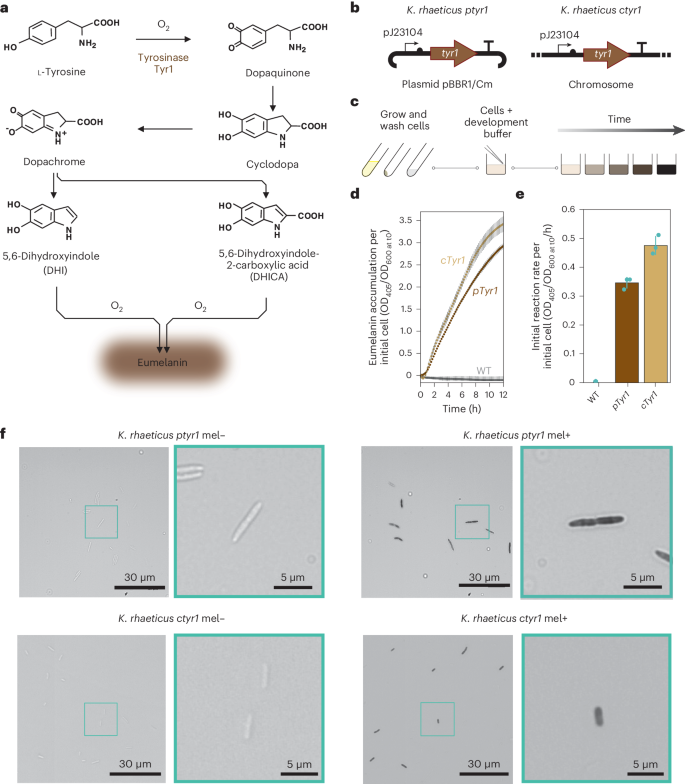2024-04-03 インペリアル・カレッジ・ロンドン(ICL)
<関連情報>
- https://www.imperial.ac.uk/news/252494/plastic-free-vegan-leather-that-dyes-itself/
- https://www.nature.com/articles/s41587-024-02194-3
チロシナーゼの発現を制御したセルロース生産菌から自己染色テキスタイルを開発 Self-pigmenting textiles grown from cellulose-producing bacteria with engineered tyrosinase expression
Kenneth T. Walker,Ivy S. Li,Jennifer Keane,Vivianne J. Goosens,Wenzhe Song,Koon-Yang Lee & om Ellis
Nature Biotechnolog Published:2 April 2024
DOI:ttps://doi.org/10.1038/s41587-024-02194-3

Abstract
Environmental concerns are driving interest in postpetroleum synthetic textiles produced from microbial and fungal sources. Bacterial cellulose (BC) is a promising sustainable leather alternative, on account of its material properties, low infrastructure needs and biodegradability. However, for alternative textiles like BC to be fully sustainable, alternative ways to dye textiles need to be developed alongside alternative production methods. To address this, we genetically engineer Komagataeibacter rhaeticus to create a bacterial strain that grows self-pigmenting BC. Melanin biosynthesis in the bacteria from recombinant tyrosinase expression achieves dark black coloration robust to material use. Melanated BC production can be scaled up for the construction of prototype fashion products, and we illustrate the potential of combining engineered self-pigmentation with tools from synthetic biology, through the optogenetic patterning of gene expression in cellulose-producing bacteria. With this study, we demonstrate that combining genetic engineering with current and future methods of textile biofabrication has the potential to create a new class of textiles.



